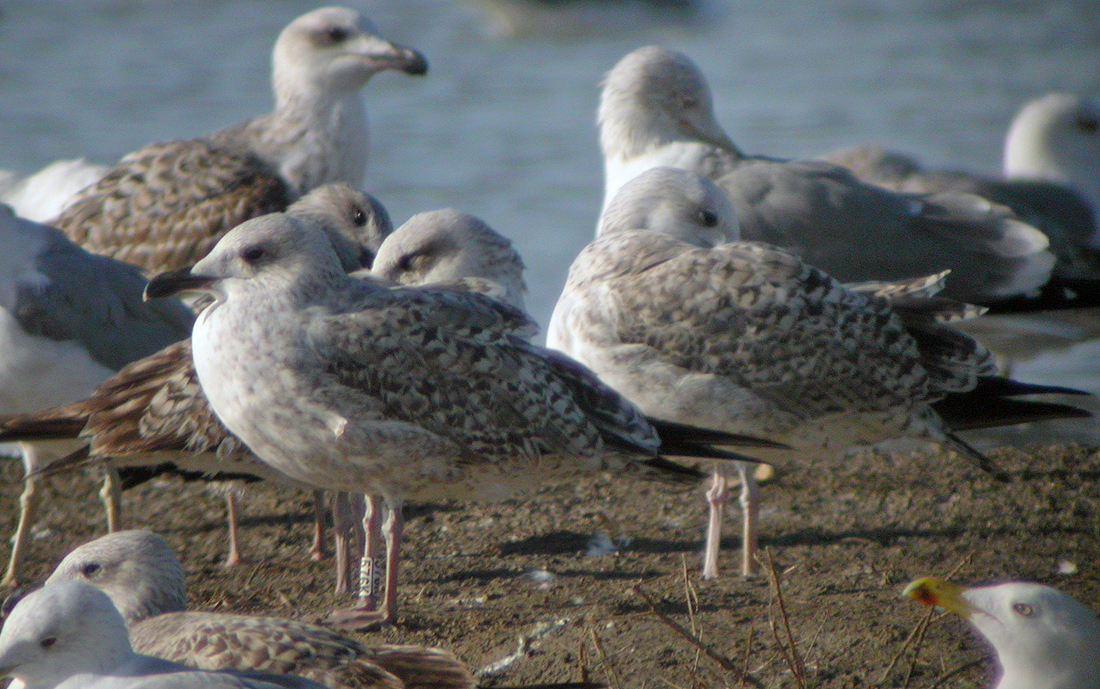 Yellow-legged
Gull - Larus michahellis
Yellow-legged
Gull - Larus michahellis
(last update: October 08 2013)
Coordinators:
Delfín González
Gabriel Martín
Antonio Gutierrez
Amir Ben Dov
Mars Muusse
Yellow-legged Gull michahellis 1CY 576K November 25 2003, Montpellier, S France. Photo Ruud Altenburg.
576K shows an average amount of replaced wing-coverts and tertials in the post-juvenile moult. All scapulars have been replaced for second generation feathers, including the rear lower scapulars, the ones covering the scapular coverts. In the upper scapulars, a subsequent moult to third generation feathers has started (25-50% replaced), with the third generation feathers still very second generation-like in their pattern, but grey-based and again with broad neat fringes indicating freshness.
The partial autumn moult in tertials and
wing-coverts in the left wing:
tertials #1-4;
greater coverts #1-6,14;
median coverts #1-5, #7-10;
lower lesser covert #1-8 and about half of the visible lesser coverts (50% in left wing;
with 50% of the lessers visible). Outer lesser coverts and the upper row
may still be juvenile.
The bill is most dark, with a slightly paler tip.
